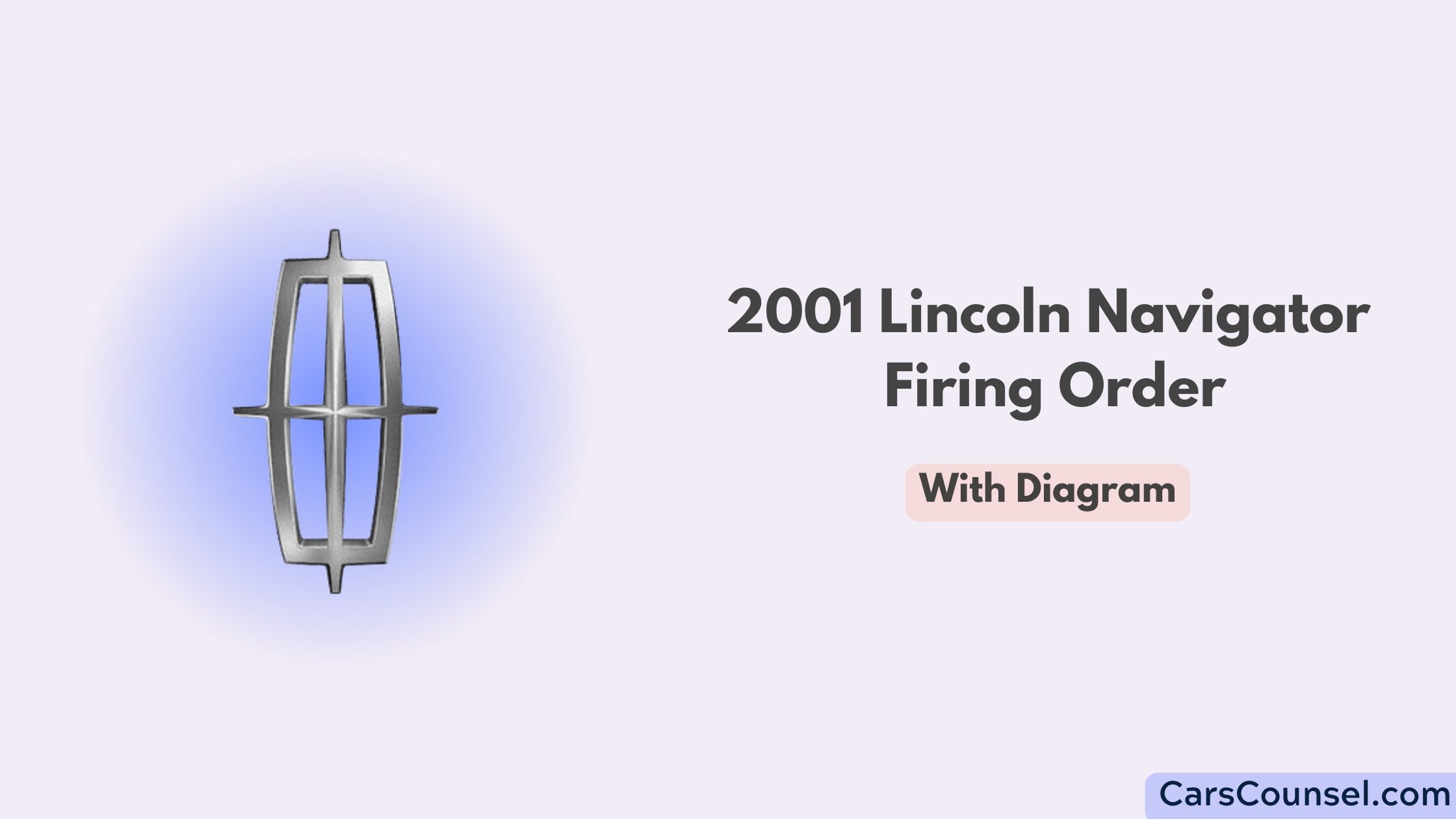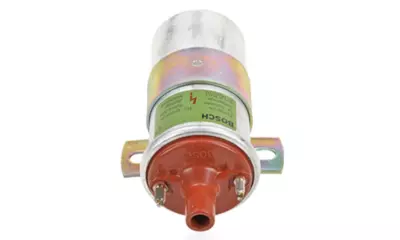The firing order for your 2001 Lincoln Navigator is 1-3-7-2-6-5-4-8 with the number one cylinder initiating the sequence from the front of the engine. It’s crucial to maintain this cylinder sequence because it guarantees balanced engine performance and reduces vibrations, and any deviation can lead to a variety of issues like rough idling, decreased fuel efficiency, and hard starts.

We’ve provided a detailed diagram to aid you in understanding this order better. Stick around to learn more about common tune-up symptoms and how to troubleshoot them effectively.
Quick Navigation
Key Takeaways
- The firing order for a 2001 Lincoln Navigator is 1-3-7-2-6-5-4-8, which is crucial for the engine’s performance and balance.
- The firing sequence begins with cylinder number one, located at the front of the engine.
- An incorrect firing order can lead to rough idling, decreased fuel efficiency, and loss of power in the vehicle.
- Regular tune-ups are essential to maintain the correct firing order and ensure optimal performance of the engine.
- The correct identification and sequence of the firing order can be visually represented through a diagram for better understanding and troubleshooting.
Understanding the Firing Order

While you may not think of it often, the firing order of your 2001 Lincoln Navigator plays an important role in guaranteeing its engine delivers smooth and powerful performance, much like a conductor guiding an orchestra’s performance.
This firing order, 1-3-7-2-6-5-4-8, is a specific sequence that your SUV’s engine cylinders follow to ignite the fuel-air mixture. This cylinder sequence is essential for maintaining balance and minimizing vibrations in your Navigator’s engine.
When the firing order is off, you’ll notice a drop in engine performance, including rough idling, decreased fuel efficiency, and loss of power. So, remember, just as a beautiful symphony requires a precise sequence of notes, your Navigator’s luxurious ride relies on the correct firing order.
Regular tune-ups ensure that this order is maintained, optimizing your SUV’s performance.
Identifying Cylinder Number One
In understanding your 2001 Lincoln Navigator’s engine, it’s important to identify the location of cylinder number one, as this cylinder initiates the firing order sequence. It sits at the front of your engine, dictating the order of ignition for the remaining cylinders. Its location is vital for troubleshooting engine performance and diagnostics.
With the correct cylinder location, you can verify the firing order, ensuring smooth and efficient operation of your Navigator. Misidentification can lead to performance issues, making diagnostics challenging. Number one cylinder leads the symphony of your Navigator’s engine, setting the tempo for the remaining cylinders. Correct identification is essential in all troubleshooting steps. Understanding its location and role in your engine’s performance maximizes your vehicle’s efficiency and power, keeping your Navigator running smoothly.
Common Tune-Up Symptoms
You might be due for a tune-up if you’re noticing symptoms like rough idling, decreased fuel efficiency, or a loss of power in your 2001 Lincoln Navigator. These are clear signs that your engine performance might be compromised, and a thorough tune-up diagnostics is required.
Here are some common tune-up symptoms to watch out for:
- Persistent engine light: This could indicate a variety of issues that need immediate attention.
- Hard starts: Difficulty in starting your engine can be due to various reasons like a faulty ignition or fuel system.
- Engine misfires: This affects your car’s power and can lead to fuel efficiency issues.
- Unusual noises: Knocking, pinging, or popping sounds are often indicative of engine troubles.
- Excessive exhaust smoke: This could signal oil or coolant leaks, which can lead to power loss.
Understanding these symptoms will help maintain your Navigator’s performance.
Engines with Similar Firing Orders
Conclusion
So, you’ve journeyed through the complex world of your Navigator’s firing order. You’re now armed with the knowledge needed for a smooth running engine.
But, how will it perform after you’ve applied this newfound expertise? There’s only one way to find out. Start that engine, feel its power, and revel in the symphony of a perfectly tuned Lincoln Navigator.
After all, the proof of the tune-up is in the purring.

